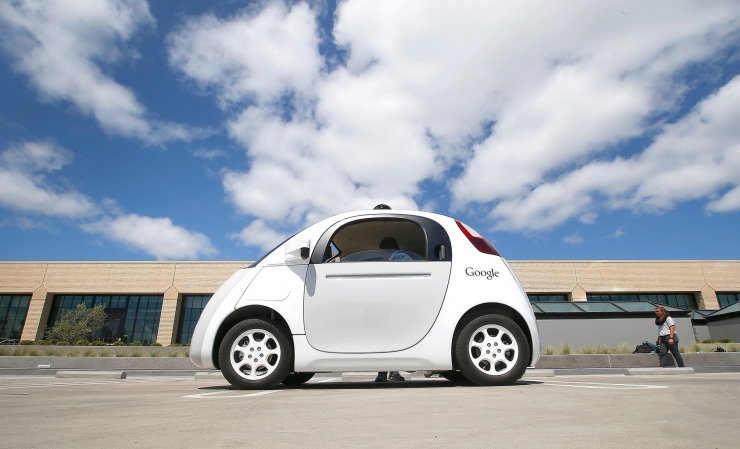In the previous article “National Attitudes to Driverlessnessâ€, the new wisdom drive referred to various supportive policies adopted by unmanned authorities in various levels of government agencies, etc. At that time, it was concluded that the Asia-Pacific region is indeed more conservative than Europe and the United States. Some, but this is also because of different national conditions. In the article, China does not have much clear supportive policy in terms of driverlessness. It only supports attitudes. However, according to recent news in the industry, China’s technical standards for unmanned driving will be introduced in August. Now.

Google Unmanned Vehicle
Recently, at the "2016 Automobile and Information and Communication Integration Development Forum," Director of the Automotive Division of the Ministry of Industry and Information Technology of the Ministry of Industry and Information Technology, Miao Weizhen mentioned in his speech that the research on the "Intelligent Network Alliance Automotive Development Technology Roadmap" has been basically completed. Launched in August, the so-called "Intelligent Connected Vehicle" includes the "driving without driver" and "autopilot" that we have always mentioned.
The Ministry of Industry and Information Technology also commissioned the Automobile Association to take the lead in drafting the overall plan for the development of the intelligent networked automobile development. Some policy measures are also being pushed forward.
It is understood that the state’s overall plan for “Intelligent Connected Cars†began in October 2014. At that time, the Ministry of Industry and Information Technology entrusted the China Automobile Industry Association, the China Automobile Engineering Association, and the National Automobile Standardization Technical Committee to carry out research. Among them, the China Automotive Engineering Association is responsible for the development of the technology roadmap, while the steam standard committee is responsible for the planning of the standard system. At present, the intelligent network-linked automobile standard system plan has been drafted. After many rounds of discussions in the industry, a standard framework system has been formed, and opinions have been formed. After revision and improvement, it will be publicly released. At the same time, it is also applying for the establishment of the Smart Net Alliance Automotive Subcommittee, which plans to bring in experts from related fields and jointly research and formulate relevant technical standards. The development of specific standards such as intelligent assisted technology information security is also accelerating.
It is understood that this set of standard system framework to be released next month includes four main parts: basic, general specifications, product and technology applications, and related standards. The basic and common specifications relate to the basic standards for the commonness of network integration. The application of products and technologies involves specific design standards and is the backbone of the framework. It includes details on information collection, decision alarm, and vehicle control. The related standards relate to information exchange, communication protocols, connection interfaces, and so on.

Baidu unmanned vehicles
In other words, the standard for smart gridlink cars will soon be introduced in China, which will also affect the future development of China's smart gridlink car. However, industry insiders said that this is not a complete "Intelligent Network Alliance automotive standards", but an overall framework, specific details will be added and adjusted in the future.
In May of this year, the State Council issued the “Made in China 2025â€, which has already made the Intelligent Internet Alliance automobile industry one of its key areas. The “Thirteenth Five-Year Plan†outline also explicitly implements “Made in China 2025â€.
In the past two years, the Ministry of Industry and Information Technology has also done some work in promoting the integration of the automotive industry and information and communication technologies, including strengthening the top-level design of intelligent networked vehicles, clarifying the overall development goals, major tasks and safeguard measures, and organizing the domestic Tsinghua University Automobile Association. Research institutes such as the Research Institute and the CCID Research Institute have developed the Smart Net Alliance automobile development strategy as the basis for other planning and work programs.
In other words, the intelligence and networking of automobiles have already entered the strategic planning of the country's future development.
However, many people in the industry stated that they have some concerns about the development of intelligent network-linked vehicle standards and believe that intelligent network-linked vehicles are new and technological development is not mature enough. Forming standards too early will instead limit the progress of technology. But this point Lei Feng network (search "Lei Feng Net" public concern) do not have to worry about too much, because standards are generally used to ensure safety, applicability and other just-standard, and the technical constraints will not be too large, and It will adjust accordingly with the improvement of technology. In general, the introduction of technical specifications also means that China’s “Intelligent Connected Vehicles†is on the right track.
